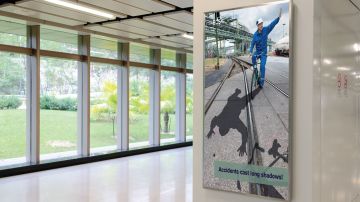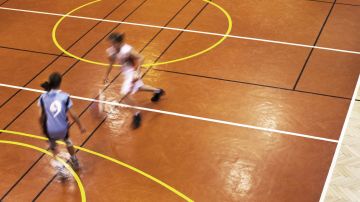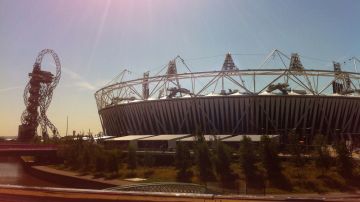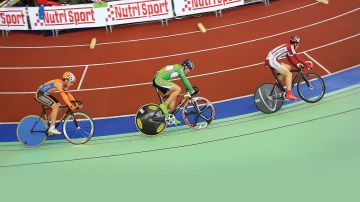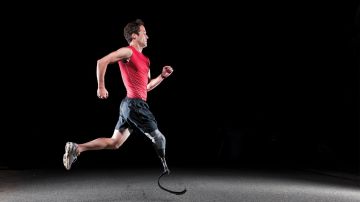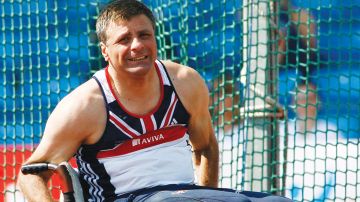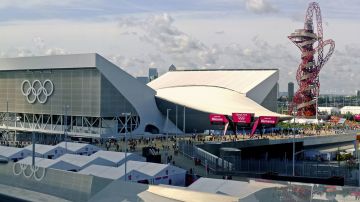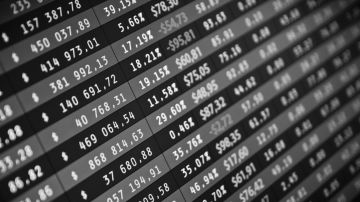INEOS doesn’t have a habit of shouting about its achievements from the rooftops but maybe it should. If you are looking for a company that touches almost everything we do INEOS really is the word for chemicals.
INEOS has been helping to break world records, shape world events and create world champions for years.
As a company, it’s deeply proud of those achievements but there the accolades seemingly end.
For few others - outside the industry - are perhaps aware of the massive contribution that PVC makes to the world of modern sport.
“It’s an amazing material,” said Jason Leadbitter, Sustainability and Compliance Manager for INEOS ChlorVinyls.
“It is cost-effective, long-lasting, easy to maintain and a highly versatile construction material with a favourable environmental footprint.”
That said, Jason said that sadly some would always be institutionally racist against PVC.
“It will always be seen by some as the bad boy of plastics, which really grieves me,” he said.
Fearing that the organisers of London 2012 might buckle under pressure from environmental groups such as Greenpeace and ban PVC from the Olympic Games – just as the Australian organisers in Sydney had done in 2000 – he, along with other industry representatives, arranged to meet Dan Epstein, Olympic Delivery Authority’s head of sustainable development, about five years ago to make a case for using PVC.
“All we asked for was a fair hearing,” said Roger Mottram, Environmental & Regulatory Affairs Manager for INEOS ChlorVinyls and chairman of the British Plastics Federation Vinyls Group. He also attended the meeting.
“And that’s what we got. He was very good to us.
“He told us that just as the athletes would be expected to raise the bar on performance, he wanted the industry to do the same.
“He wanted us to set new standards and innovate.
“We just wanted the chance to prove we could. And that’s essentially what we intend to do.”
When the London Games officially opened on July 27, more than 142,000 square metres of PVC had been used to create the venues – including the aquatics centre – for the biggest sports’ show on earth.
Athletes competed in arenas with PVC floors and some relied on equipment made from PVC.
The thousands watching as the events unfolded sat under PVC canopies, protected by PVC barriers.
That’s not to mention the miles of PVC pipes and electrical cables that had been laid before the Opening Ceremony, which attracted a worldwide TV audience of over one billion people.
“PVC was in use almost everywhere you looked,” said Roger.
And the reason for that is simple. In short, PVC can withstand pouring rain, raging seas and blazing sunshine, which is good news when one considers Britain’s unpredictable summers.
Those who think, though, that the Olympic Delivery Authority simply caved in under pressure from the PVC industry and gave it an easy ride, should think again.
Aware that the use of PVC is a contentious issue, London 2012’s sustainability group published a policy in 2009 outlining the use of vinyl in the Olympic Park.
“We wanted to use the opportunity of hosting the London 2012 Olympics to work with the industry to set new standards,” said Dan Epstein.
“We wanted to help move the industry towards a more sustainable manufacture, use and disposal of PVC fabrics.”
He said the stringent controls and audit processes had been put in place to ensure that where PVC was used, it was done in an environmentally- friendly way so that much of it could be recycled or reused.
David Stubbs, head of sustainability on the London Organising Committee of the Olympic Games and Paralympic Games, said recycling was important because London 2012 had more temporary venues than at any previous Olympics or global event.
All those temporary structures are due to be torn down and recycled when the Paralympic Games come to a close on September 9.
The PVC will be separated from other materials such as natural textiles, metal and rubber and then recycled or reused.
The proposal is to use some of the PVC at the 2014 FIFA World Cup in Brazil and it is hoped that once the basketball arena has been dismantled that it may be reused at the 2016 Rio Games.
The policy, which was drawn up by London 2012, also insisted that all materials had to:
-
INCLUDE at least 30% recycled content;
-
BE manufactured in accordance with The European Council of Vinyl Manufacturers’ Industry Charter; and
-
MEET standards for effluent discharges and vent gases and must not contain lead, mercury or cadmium stabilisers.
Richard Jackson, principal sustainable development and regeneration manager of the Olympic Delivery Authority, spoke of lessons learned in a report, entitled Learning Legacy.
He said despite initial concerns about the policy, the plastics industry had broadly welcomed the approach and said that it had actually stimulated the supply chain to innovate a non-phthalate PVC, which was used in a number of the building wraps.
The policy, he said, had also recognised the PVC industry’s voluntary code, Vinyl2010, which during its 10-year lifecycle had exceeded its own targets on recycling and made good progress in phasing out various additives.
INEOS had been heavily involved in Vinyl2010’s commitment to look at what the industry could do about PVC across Europe and had made a significant financial contribution to its success.
Last year the European PVC industry – buoyed by the success of Vinyl2010 – went even further and signed up to VinylPlus, a new 10-year voluntary commitment.
“With VinylPlus we have put in place some new, more ambitious targets for sustainable development,” said Jason.
All the targets have been indirectly set by stakeholders following a consultation.
“This means we can really address the areas that are perceived to be issues,” he said.
Their plan is to:
-
RECYCLE 800,000 tons of PVC every year by 2020;
-
PHASE out lead stabliser additives by 2015; and
-
REDUCE the amount of energy used in the production of PVC.
“We’re trying to find ways to make people more aware of the benefits of PVC but also show that we’re making progress on environmental sustainability,” said Jason.
At a press conference in London in June, Roger launched a British Plastic Federation brochure PVC in Sport to show how critical PVC had become to the world of high performance sports.
“These are exciting times for sporting events and PVC will play its part,” he said.
The brochure also highlighted the criteria that the Olympic Delivery Authority had set in its PVC policy for London 2012.
Roger said he hoped it would help to spread the message about the sustainability of PVC.
“The UK PVC industry has undergone a transformation after a period when the material was effectively labelled a public menace,” he told journalists.
During a recent interview with British Plastics and Rubber Magazine, Roger spoke of the importance of events like the Olympics to PVC.
“If a lot of PVC is used in big projects like the Olympics and can be shown to meet the very strict sustainability criteria, then we hope that it will encourage others to follow suit,” he said.
“What we’ve shown is that PVC can be recycled and that it can, and is being, responsibly produced at a very high standard.”
Jason said one of the main aims of VinylPlus was also to make stakeholders aware of the contribution PVC made in modern life.
“PVC is incredibly versatile and used in many everyday items that people take for granted,” he said.
The group is also promoting a new study which compares the full cost of PVC against other materials.
“In the current economic climate, where the public sector is under pressure to make savings, we want to show that you can save millions on council budgets if you use PVC products.” he said.


